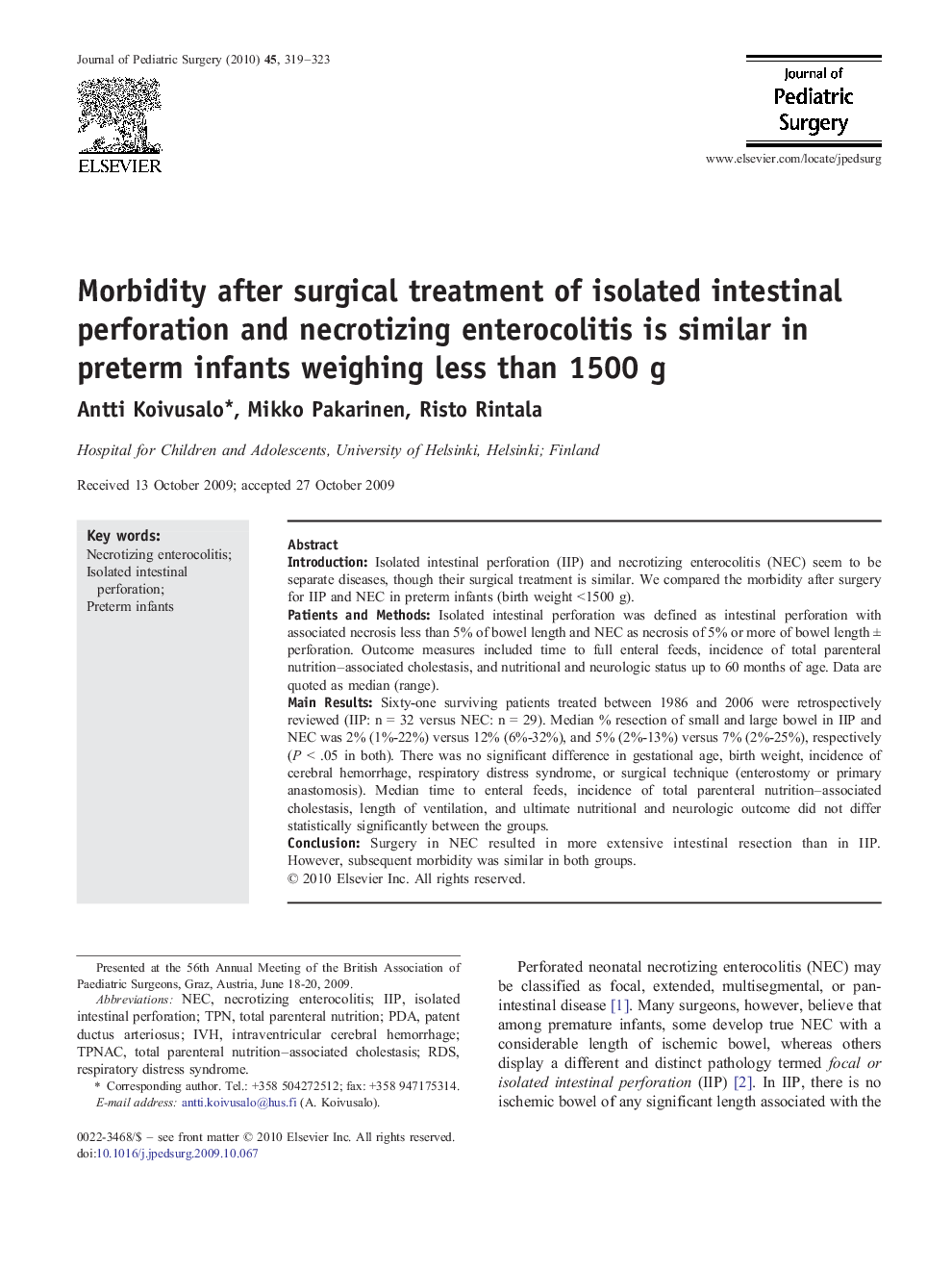| Article ID | Journal | Published Year | Pages | File Type |
|---|---|---|---|---|
| 4157369 | Journal of Pediatric Surgery | 2010 | 5 Pages |
IntroductionIsolated intestinal perforation (IIP) and necrotizing enterocolitis (NEC) seem to be separate diseases, though their surgical treatment is similar. We compared the morbidity after surgery for IIP and NEC in preterm infants (birth weight <1500 g).Patients and MethodsIsolated intestinal perforation was defined as intestinal perforation with associated necrosis less than 5% of bowel length and NEC as necrosis of 5% or more of bowel length ± perforation. Outcome measures included time to full enteral feeds, incidence of total parenteral nutrition–associated cholestasis, and nutritional and neurologic status up to 60 months of age. Data are quoted as median (range).Main ResultsSixty-one surviving patients treated between 1986 and 2006 were retrospectively reviewed (IIP: n = 32 versus NEC: n = 29). Median % resection of small and large bowel in IIP and NEC was 2% (1%-22%) versus 12% (6%-32%), and 5% (2%-13%) versus 7% (2%-25%), respectively (P < .05 in both). There was no significant difference in gestational age, birth weight, incidence of cerebral hemorrhage, respiratory distress syndrome, or surgical technique (enterostomy or primary anastomosis). Median time to enteral feeds, incidence of total parenteral nutrition–associated cholestasis, length of ventilation, and ultimate nutritional and neurologic outcome did not differ statistically significantly between the groups.ConclusionSurgery in NEC resulted in more extensive intestinal resection than in IIP. However, subsequent morbidity was similar in both groups.
